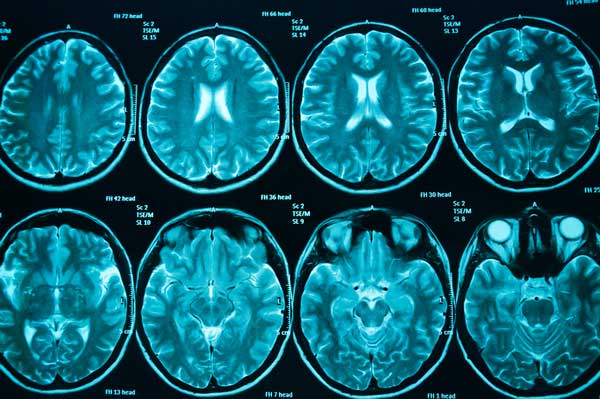In Scotland, more than 70% of brain cancer diagnoses take place via an emergency route – the highest figure of any cancer type. This week, updates to the Scottish Referral Guidance for Suspected Cancer have been published – including for suspected brain and central nervous system (CNS) cancers.
This is the first update since 2019. Suspected cancer referral guidelines are a vital tool for primary care professionals across Scotland, helping them to identify people who are most likely to have cancer and refer them urgently for further assessment. We were pleased to represent the brain tumour community during the peer review process and contribute insights drawn from our community and our policy work.
Below we summarise some of the key changes that have been made to the guidance and what they mean.
Inclusion of ‘Headache Plus’ symptoms
In our Fighting for a Faster Diagnosis report, we highlighted research showing that combinations of symptoms – rather than individual symptoms – may offer a better indication of a potential brain tumour. These are often referred to as ‘Headache Plus’ symptoms.
The new guidance reflects this by encouraging GPs to consider symptom combinations rather than relying on headache alone, which is a poor indicator of brain tumours in isolation. For example, a headache accompanied by cognitive changes (like memory problems) is more suggestive of a potential brain tumour than either symptom on its own. We welcome this shift in approach.
Emphasis on urgent access to imaging
Another important change is the clear statement that direct access to imaging must be delivered urgently, to avoid diagnostic delays. In Scotland, GPs can directly request scans – usually to CT – if patients meet certain criteria.
During the peer review session, we shared emerging insights from our ongoing GP direct access project, which will be published in our upcoming report later this summer. We hope this change in guidance will support faster investigation and diagnosis.
Reference to the Semantic Verbal Fluency Test (SVFT)
The updated guidance now includes the use of the Semantic Verbal Fluency Test (SVFT) as a good practice point. This is a simple tool – asking patients to name as many animals as they can in one minute – used to assess cognitive function. A lower score (fewer than 17 animals) can indicate a cognitive deficit.
Research also suggests that combining this result with other symptoms, like headache, can raise the likelihood of it being a brain tumour. The inclusion of this tool gives GPs another practical method for identifying subtle neurological changes.
Signposting to Better Safe Than Tumour
We were pleased to see a reference to our Better Safe Than Tumour resource in the updated guidelines. This site offers a comprehensive list of brain tumour signs and symptoms and provides support for both healthcare professionals and patients.
This signposting will help ensure that GPs are aware of and can access trusted tools to aid in clinical decision-making. The site is also referenced in the referral guidance for children, teenagers, and young adults.
“These updated guidelines represent meaningful progress in the diagnosis of brain tumours in Scotland. By giving GPs clearer tools and better recognition of symptom patterns, they support more timely and accurate referrals.”
Cameron Miller, Director of External Affairs & Strategy, The Brain Tumour Charity
What’s next?
While certain emergency presentations will always be unavoidable due to the nature of brain tumour symptoms, it is vital that the diagnostic process is as effective and equitable as possible. We hope that the publication of this guidance will be followed by more transparent data on referral pathways and diagnosis routes, so we can better understand how people are being diagnosed – and where improvements can be made.
“As Chair of the Scottish Steering Committee of The Brain Tumour Charity, I am proud that we were able to contribute insights from across our community to inform these changes“
David Garcia Jurado, Chair of our Scottish Steering Committee
David Garcia Jurado, Chair of The Brain Tumour Charity’s Scottish Steering Committee shared: “The inclusion of ‘Headache Plus’ symptom combinations, greater urgency around imaging, and practical tools like the Semantic Verbal Fluency Test give GPs better support to spot warning signs earlier.
We know that a faster diagnosis can improve outcomes, reduce distress, and allow people and families more time to prepare and make informed choices. These changes are meaningful, but now we need consistent implementation, better data on diagnostic pathways, and continued momentum toward an Optimal Timed-Diagnostic Pathway. Only then can we truly raise the standard of brain tumour diagnosis across Scotland.”
To provide a gold standard for brain tumour diagnosis in Scotland, we will continue to call for the creation of an Optimal Timed-Diagnostic Pathway, as recommended by our Scottish Steering Committee and as a key ask in our wider campaign for a National Brain Tumour Strategy.
